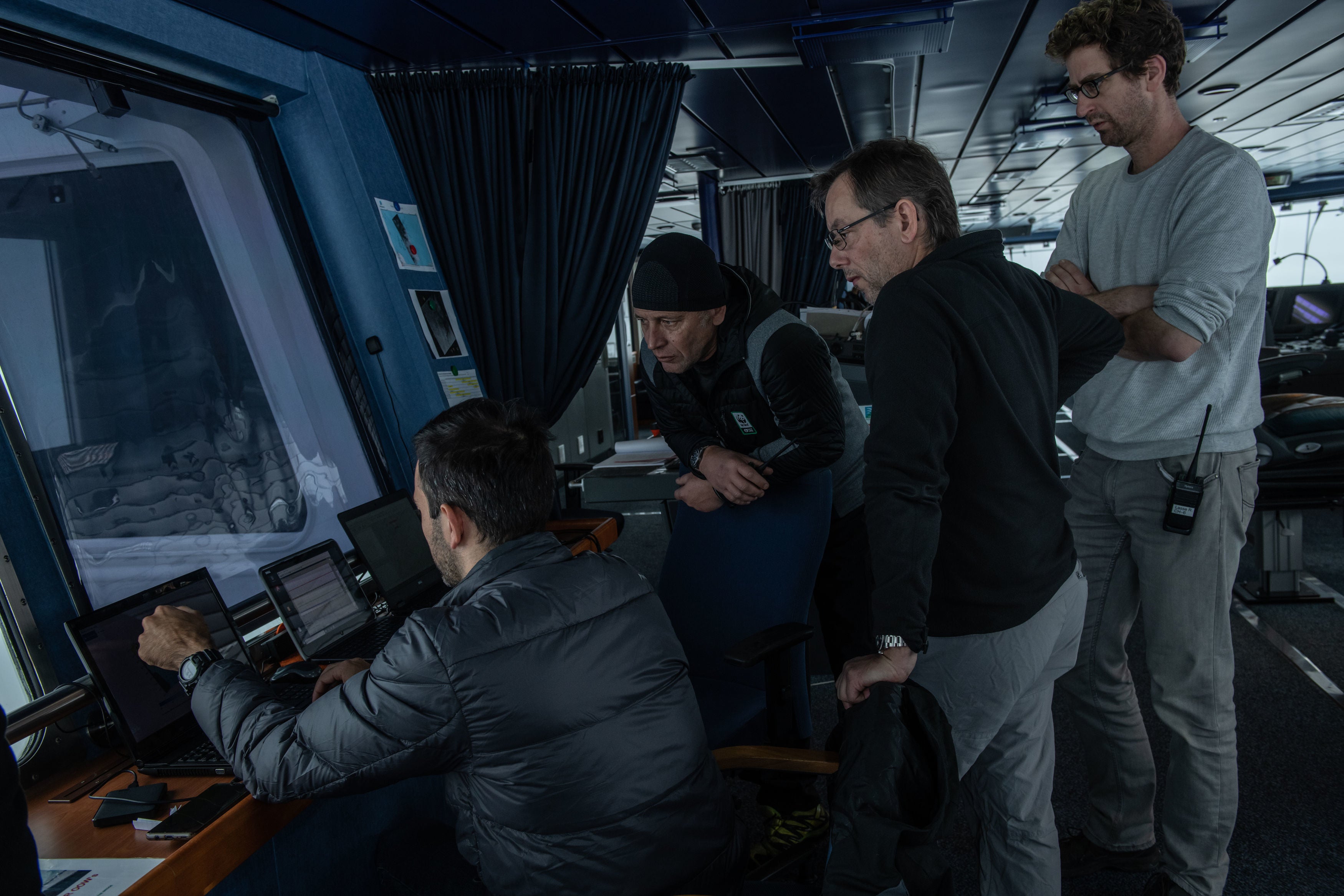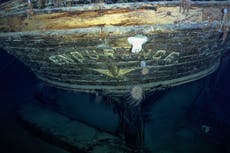Endurance: ‘Remarkably’ low sea-ice levels helped historic mission to find Shackleton’s lost ship
Exclusive: Antarctic expedition’s chief scientist says crew took advantage of rare favourable conditions to reach long lost wreck
The historic discovery of Ernest Shackleton's ship Endurance was aided by a lower than average level of sea ice in the area where the wreck was found, according to the expedition's chief scientist.
Dr Lasse Rabenstein, still on the research vessel after the successful mission to find the legendary lost ship, told The Independent: “The sea ice extent … was remarkably low in the western Weddell Sea this year”, which was “definitely an advantage for the wreck search”.
As a result of the low level of sea ice the 440ft ice-breaking research vessel S A Agulhas II “only needed to steam about 20nm (nautical miles) into the sea-ice cover” to reach the wreck site, Dr Rabenstein said.
Some 107 years after Endurance was crushed by ice sheets in the Weddell Sea and eventually sank, the wreck was found in “jaw-dropping” condition, according to mission leader Dr John Shears, at a depth of 3,008m (9,870ft).

The discovery was made amid harsh conditions, even in the Antarctic summer, with shifting sea-ice, blizzards, and temperatures dropping down to -18C.
But Dr Rabenstein said the low extent of the sea ice could not be attributed to the climate crisis.
He told The Independent: “Despite the fact that global warming is happening dramatically fast, I would never state today, just half a day after we have left the Weddell Sea sea ice, that the favourable ice conditions we experienced during the wreck search were attributed to global warming. They are most likely not.
“Before we can speak of a global warming effect we need to see a negative trend on the sea-ice extent, in contrast to annual or decadal variability.
“Unlike in the Arctic, with a clear negative trend in the summer minimum sea-ice extents, the Antarctic sea-ice extent does not show any climatologically relevant trend so far.”
The climate crisis has warmed the Arctic between two and three times faster than anywhere else in the globe.
This has caused sea-ice loss which has in turn amplified the warming, reducing ice cover even further.

This happens because the loss of the sea ice means the sun's energy is no longer reflected back into space, but is absorbed by the open sea, warming it, and making future sea-ice formation less likely.
While the climate crisis is having myriad effects on the Antarctic, sea-ice extent is less impacted here in comparison to the Arctic, primarily because of the land masses around the Earth’s poles.
The Arctic ocean is largely covered by ice and surrounded by land, with ice stretching all the way to the pole.

But the Antarctic is a vast continent surrounded by a thin ring of sea ice, much of which melts and reforms each year, meaning there is less opportunity for a similar feedback loop to operate.
Dr Rabenstein said overall, sea ice conditions in the Weddell Sea today are broadly similar to what they were in the era Shackleton undertook his expedition, and this does not appear to be changing in the Antarctic yet.

He said: “There is probably no trend within the last 107 years towards a different sea-ice regime in the Weddell Sea.
“If you compare just the two years 1915, when the Endurance sank, and 2022, it is likely that 2022 had lighter ice conditions, a lower ice extent and more, thinner first year ice in the western Weddell Sea.
“Overall, I would rather say that we had favourable ice conditions for the wreck search by a lucky coincidence and the right weather situations over the last months over the south Atlantic.”
Join our commenting forum
Join thought-provoking conversations, follow other Independent readers and see their replies
Comments



Bookmark popover
Removed from bookmarks